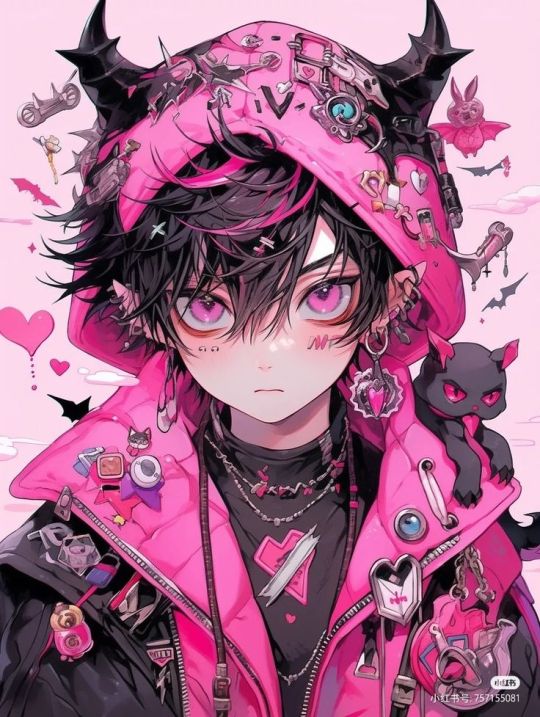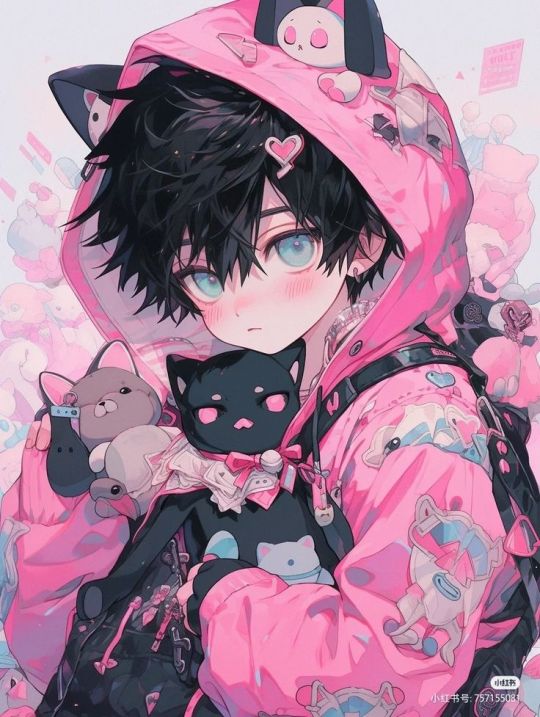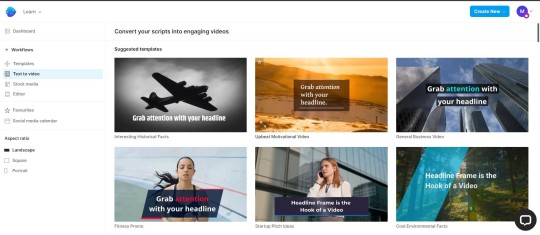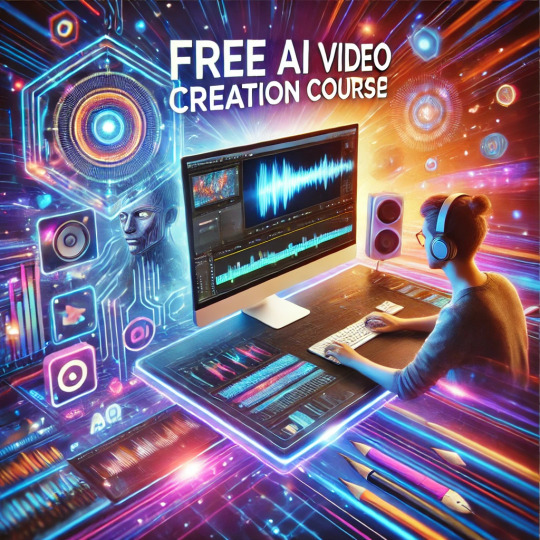#artificial intelligence image generator free
Explore tagged Tumblr posts
Text

The Ultimate Guide to AI Picture Generation and Movie Creation in 2025
Artificial intelligence has revolutionized the way we create visual content, and makemovie.ai stands at the forefront of this technological advancement. Whether you're a filmmaker, content creator, or creative enthusiast, understanding how to leverage AI for picture generation and movie making can transform your projects from concept to reality with unprecedented ease and professional quality.
Understanding AI Picture Generation
AI picture generation has evolved from producing simple images to creating stunning, photorealistic visuals that can serve as the foundation for your movies. Using advanced machine learning algorithms, modern AI systems can:
Generate high-resolution images from text descriptions
Create consistent character designs across multiple scenes
Produce unique backgrounds and environments
Maintain stylistic consistency throughout your project
These capabilities make it possible to visualize your ideas instantly, saving countless hours in pre-production and concept development.
The Revolution of AI Movie Making
Making movies with AI has become more accessible and sophisticated than ever before. The technology now enables creators to:
Pre-Production Enhancement
Storyboard generation from scripts
Location scouting through AI-generated environments
Character design and costume visualization
Prop and set design creation
Production Innovation
Real-time background generation
Dynamic scene composition
Weather and lighting condition simulation
Special effects previsualization
Post-Production Excellence
Automated scene transitions
Visual effects enhancement
Color grading assistance
Frame interpolation for smooth motion
Getting Started with AI Picture and Movie Generation
To begin creating with AI, follow these essential steps:
Define Your Vision Start with a clear concept of what you want to create. The more specific your descriptions, the better the AI can understand and execute your vision.
Choose Your Tools Select the right AI tools for your project. makemovie.ai offers an integrated suite of features designed to handle both image generation and movie creation seamlessly.
Understand the Workflow Familiarize yourself with the basic workflow:
Input your descriptions or requirements
Generate initial images or scenes
Refine and iterate based on results
Combine elements into your final production
Master the Fine-Tuning Learn to adjust parameters such as:
Style consistency
Lighting and atmosphere
Character features
Environmental details
Advanced Techniques for Professional Results
To achieve professional-quality results, consider these advanced strategies:
Image Generation Mastery
Use detailed prompts for better accuracy
Maintain consistent style guides
Implement feedback loops for refinement
Combine multiple generation techniques
Movie Creation Excellence
Plan sequences with storyboard integration
Utilize scene continuation features
Implement smooth transitions
Maintain narrative coherence
Best Practices for AI-Generated Content
To ensure the highest quality output:
Quality Control
Review generated content carefully
Maintain consistent quality standards
Document successful approaches
Learn from less successful attempts
Project Management
Organize your assets effectively
Track iterations and improvements
Maintain version control
Document your process
Future of AI in Visual Content Creation
As AI technology continues to evolve, we can expect:
Higher resolution outputs
More precise control over generated content
Better integration with traditional tools
Enhanced real-time generation capabilities
Conclusion
AI picture generation and movie making represent a significant leap forward in creative possibilities. With tools like makemovie.ai, creators can now bring their visions to life with unprecedented ease and quality. Whether you're a professional filmmaker or an enthusiastic beginner, the power of AI is ready to help you create remarkable visual content.
Start your journey into AI-powered creation today and discover how these tools can transform your creative process. Visit makemovie.ai to explore the possibilities and join the future of digital content creation.
#ai image#deep fake#image to image#text to image#text to video#artificial intelligence image generator free#artificial intelligence images generator#ai photography generator#ai image generator free#free ai image generator#ai picture generator#ai photo generator#ai generated images#ai image generator
0 notes
Text
𝓛𝓸𝓿𝓮 𝓹𝓪𝓼𝓼𝓲𝓸𝓷𝓪𝓽𝓮𝓵𝔂 𝓽𝓸 𝓵𝓲𝓿𝓮 𝓪 𝓹𝓲𝓷𝓴 𝓵𝓲𝓯𝓮




𝐹𝑒𝑒𝓁 𝓂𝓎 𝓇𝒽𝓎𝓉𝒽𝓂, 𝒸𝑜𝓂𝑒 𝓌𝒾𝓉𝒽 𝓂𝑒 상상해 봐 뭐든지
#anime and manga#anime aesthetic#free!#anime gif#anime edit#anime fanart#fat anime#anime#anime art#ai#machine learning#copyright#technology#artificial intelligence#chatgpt#ai artwork#ai image#ai art#ai generated#tumblog#tumblr things#tumblr stuff#hellsite#blog#poets on tumblr#writers on tumblr#photographers on tumblr#artists on tumblr#tumblr milestone#kpop
110 notes
·
View notes
Text

You have received FREE credits, start your ONLINE GENERATION now! Get +50 extra credit free, earn money for your work
https://tensor.art/models/643899311148748770?source_id=nz-xo1HinEe2o_EqbX7z8hcj
#ai#ai art#ai generated#ai image#ai artwork#artificial intelligence#stable diffusion#machine learning#tech#monster#free ai tools
14 notes
·
View notes
Text

#artificial intelligence#ai#anime#ai generated#ai artwork#ai image#ai art#chatgpt#japanese animation#animation#free palestine#palestine#holyland#mecca#islam#allah#death shroud#holy quran#quran#palestinians#baby#children#marteria#gaza#gaza strip#gaza genocide#genocide#jerusalem#free my people#moses
7 notes
·
View notes
Text
Top AI tools AI tools better than Chatgpt Text to Video AI tool Text to image generator Best AI tools for free Free AI better than Chatgpt

#top ai tools#ai art#ai generated#ai image#ai artwork#ai girl#duolingo#sag aftra#voice acting#artificial intelligence#chatgpt#Bettertoolsthanchatgpt#free ai tools#best ai tools#text to image#text to video#texttospeech#substitute
3 notes
·
View notes
Text
How to use bing image creator
How to use bing image creator to create free unlimited ai images
#ai art#ai image#free ai tools#artificial intelligence#bing ai#microsoft#text to image#bing ai image generator#stable diffusion
2 notes
·
View notes
Text
youtube
#ai product photography#chatgpt product design#ai product photography - chatgpt product design#product photography ai#product photography#ai product design generator#ai product design#ai product design free#ai product design tools#ai image generator#ai product design software#chatgpt product image#best ai for product design#ai tutorial#ai product photos#ai tools#artificial intelligence#ai product photography midjourney#aman agrawal#Youtube
0 notes
Text
Create Stunning AI Images with Just One Click! 🌐 Visit Now: https://imgenerator.blogspot.com
In today’s digital era, turning imagination into reality is no longer a dream. Want to create unique AI-generated images based on your ideas? Get introduced to a new and simple platform – AI Image Generator.
📸 How Does It Work?
Just type a few words and get images exactly how you imagined. You can enter prompts in Bengali, English, or any language – and the AI will instantly create an image based on that description.
🔥 Why Use This AI Image Generator:
✅ Completely free ✅ No registration required ✅ User-friendly interface ✅ Perfect for creative projects, thumbnails, posters, and more ✅ Works with Bengali too!
🎯 How You Can Use It:
Design YouTube thumbnails
Create Facebook/Instagram posts
Visualize characters or scenes from your imagination
Make book or story cover images
🌟 Bring Your Imagination to Life!
Give it a try now. Just a few words from you can turn into a masterpiece with the power of AI.
🔗 Visit the site: https://imgenerator.blogspot.com

#ai artwork#ai#ai generated#ai model#ai image#artificial intelligence#ai art#chatgpt#ao3#technology#duolingo#ai image generator#ai character#ai symbol#ai free image#converter
1 note
·
View note
Text
You Won’t Believe These FREE AI Video Generators in 2025 — Create Jaw-Dropping Videos Instantly!
Video content continues to dominate online spaces, with over 80% of internet traffic being video-driven, according to recent reports.
#ai video#ai generated#ai art#ai image#free ai video#branding#graphic design#artificial intelligence#artists on tumblr
0 notes
Text
#ai artwork#ai generated#artificial intelligence#free ai tools#business intelligence#ia image#ia générative#video ai#youtube
1 note
·
View note
Text
🚀 Free AI Video Creation Course! 🎥✨
Learn to create stunning videos using AI—fast, easy & free! Perfect for content creators, marketers, and beginners.
✅ 100% Free Enrollment ✅ AI-Powered Editing Tools ✅ Boost Your Creativity & Career
👉 Apply Now
#AIVideo #FreeCourse #ContentCreation #VideoEditing

0 notes
Text

Create stunning AI generated images, artwork & photos with MakeMovie.AI's professional platform. ⭐️⭐️⭐️⭐️⭐️ Rated 5.0/5 by users.
Generator: The Complete Guide to Creating Stunning AI Generated Images [2024]
Transform your creative vision into reality with the power of AI image generators. In this comprehensive guide, we'll explore how artificial intelligence is revolutionizing image creation and why MakeMovie.AI's platform stands out in the growing landscape of AI artwork generators.
What is an AI Image Generator?
An AI image generator uses advanced artificial intelligence to create, edit, and enhance images from text descriptions or existing images. These powerful tools have transformed the way we approach visual content creation, making professional-quality image generation accessible to everyone.
Why Choose MakeMovie.AI's AI Picture Generator?
Professional-Grade Features
High-resolution image generation
Photorealistic quality options
Custom style controls
Batch processing capabilities
User-Friendly Interface
Intuitive design
Quick learning curve
Real-time previews
Easy export options
Advanced AI Technology
State-of-the-art algorithms
Consistent results
Fast processing
Regular updates
Types of AI Generated Images You Can Create
Digital Art
Abstract compositions
Character designs
Concept art
Digital paintings
Photography
Product photos
Portrait styles
Landscape scenes
Event photography
Marketing Materials
Social media content
Advertising visuals
Brand assets
Product mockups
How to Use an AI Image Generator
Step-by-Step Guide
Visit MakeMovie.AI
Choose your image type
Enter your description
Select style preferences
Generate and refine
Download your creation
Best Practices
Use clear descriptions
Experiment with styles
Refine your prompts
Save favorite settings
Free AI Image Generator Features
Getting Started
Basic image generation
Standard resolution options
Common style presets
Community support
Premium Features
Higher resolution
Advanced controls
Priority processing
Professional support
Applications of AI Photos Generator
Business Use
Marketing materials
Product visualization
Website graphics
Social media content
Creative Projects
Art creation
Book illustrations
Game assets
Personal projects
Professional Services
Client presentations
Portfolio building
Concept development
Rapid prototyping
The Future of AI Artwork Generation
Looking ahead, AI image generators continue to evolve with:
Enhanced realism
Better control
Faster processing
New creative possibilities
Why Choose MakeMovie.AI
Platform Benefits
Intuitive interface
Professional results
Regular updates
Excellent support
Technical Advantages
Cloud-based processing
Multiple export formats
Style preservation
Batch capabilities
Success Stories
"MakeMovie.AI's image generator has revolutionized our creative workflow. We've reduced image production time by 80% while maintaining professional quality." - Michael R., Creative Director
Getting Started with AI Generated Images
Visit www.MakeMovie.AI to begin creating stunning AI-generated images today. Join thousands of satisfied users who trust MakeMovie.AI for their creative needs.
Frequently Asked Questions
How does an AI image generator work?
Our artificial intelligence images generator uses advanced machine learning to understand and create visual content based on your descriptions.
Can I use AI generated images commercially?
Yes, images created with MakeMovie.AI's platform include commercial usage rights.
What types of images can I create?
Create anything from digital art to professional photos, marketing materials, and more.
Is there a free AI image generator option?
Yes, MakeMovie.AI offers both free and premium tiers to suit different needs.
#ai image#deep fake#image to image#text to image#text to video#ai image generator#ai generated images#ai picture generator#free ai image generator#ai artwork generator#ai photos generator#artificial intelligence images generator
0 notes
Text
Extracting Training Data From Fine-Tuned Stable Diffusion Models
New Post has been published on https://thedigitalinsider.com/extracting-training-data-from-fine-tuned-stable-diffusion-models/
Extracting Training Data From Fine-Tuned Stable Diffusion Models
New research from the US presents a method to extract significant portions of training data from fine-tuned models.
This could potentially provide legal evidence in cases where an artist’s style has been copied, or where copyrighted images have been used to train generative models of public figures, IP-protected characters, or other content.
From the new paper: original training images are seen in the row above, and the extracted images are depicted in the row below. Source: https://arxiv.org/pdf/2410.03039
Such models are widely and freely available on the internet, primarily through the enormous user-contributed archives of civit.ai, and, to a lesser extent, on the Hugging Face repository platform.
The new model developed by the researchers is called FineXtract, and the authors contend that it achieves state-of-the-art results in this task.
The paper observes:
‘[Our framework] effectively addresses the challenge of extracting fine-tuning data from publicly available DM fine-tuned checkpoints. By leveraging the transition from pretrained DM distributions to fine-tuning data distributions, FineXtract accurately guides the generation process toward high-probability regions of the fine-tuned data distribution, enabling successful data extraction.’
Far right, the original image used in training. Second from right, the image extracted via FineXtract. The other columns represent alternative, prior methods. Please refer to the source paper for better resolution.
Why It Matters
The original trained models for text-to-image generative systems as Stable Diffusion and Flux can be downloaded and fine-tuned by end-users, using techniques such as the 2022 DreamBooth implementation.
Easier still, the user can create a much smaller LoRA model that is almost as effective as a fully fine-tuned model.
An example of a trained LORA, offered for free download at the hugely popular civitai domain. Such a model can be created in anything from minutes to a few hours, by enthusiasts using locally-installed open source software – and online, through some of the more permissive API-driven training systems. Source: civitai.com
Since 2022 it has been trivial to create identity-specific fine-tuned checkpoints and LoRAs, by providing only a small (average 5-50) number of captioned images, and training the checkpoint (or LoRA) locally, on an open source framework such as Kohya ss, or using online services.
This facile method of deepfaking has attained notoriety in the media over the last few years. Many artists have also had their work ingested into generative models that replicate their style. The controversy around these issues has gathered momentum over the last 18 months.
The ease with which users can create AI systems that replicate the work of real artists has caused furor and diverse campaigns over the last two years. Source: https://www.technologyreview.com/2022/09/16/1059598/this-artist-is-dominating-ai-generated-art-and-hes-not-happy-about-it/
It is difficult to prove which images were used in a fine-tuned checkpoint or in a LoRA, since the process of generalization ‘abstracts’ the identity from the small training datasets, and is not likely to ever reproduce examples from the training data (except in the case of overfitting, where one can consider the training to have failed).
This is where FineXtract comes into the picture. By comparing the state of the ‘template’ diffusion model that the user downloaded to the model that they subsequently created through fine-tuning or through LoRA, the researchers have been able to create highly accurate reconstructions of training data.
Though FineXtract has only been able to recreate 20% of the data from a fine-tune*, this is more than would usually be needed to provide evidence that the user had utilized copyrighted or otherwise protected or banned material in the production of a generative model. In most of the provided examples, the extracted image is extremely close to the known source material.
While captions are needed to extract the source images, this is not a significant barrier for two reasons: a) the uploader generally wants to facilitate the use of the model among a community and will usually provide apposite prompt examples; and b) it is not that difficult, the researchers found, to extract the pivotal terms blindly, from the fine-tuned model:
Essential keywords can usually be extracted blindly from the fine-tuned model using an L2-PGD attack over 1000 iterations, from a random prompt.
Users frequently avoid making their training datasets available alongside the ‘black box’-style trained model. For the research, the authors collaborated with machine learning enthusiasts who did actually provide datasets.
The new paper is titled Revealing the Unseen: Guiding Personalized Diffusion Models to Expose Training Data, and comes from three researchers across Carnegie Mellon and Purdue universities.
Method
The ‘attacker’ (in this case, the FineXtract system) compares estimated data distributions across the original and fine-tuned model, in a process the authors dub ‘model guidance’.
Through ‘model guidance’, developed by the researchers of the new paper, the fine-tuning characteristics can be mapped, allowing for extraction of the training data.
The authors explain:
‘During the fine-tuning process, the [diffusion models] progressively shift their learned distribution from the pretrained DMs’ [distribution] toward the fine-tuned data [distribution].
‘Thus, we parametrically approximate [the] learned distribution of the fine-tuned [diffusion models].’
In this way, the sum of difference between the core and fine-tuned models provides the guidance process.
The authors further comment:
‘With model guidance, we can effectively simulate a “pseudo-”[denoiser], which can be used to steer the sampling process toward the high-probability region within fine-tuned data distribution.’
The guidance relies in part on a time-varying noising process similar to the 2023 outing Erasing Concepts from Diffusion Models.
The denoising prediction obtained also provide a likely Classifier-Free Guidance (CFG) scale. This is important, as CFG significantly affects picture quality and fidelity to the user’s text prompt.
To improve accuracy of extracted images, FineXtract draws on the acclaimed 2023 collaboration Extracting Training Data from Diffusion Models. The method utilized is to compute the similarity of each pair of generated images, based on a threshold defined by the Self-Supervised Descriptor (SSCD) score.
In this way, the clustering algorithm helps FineXtract to identify the subset of extracted images that accord with the training data.
In this case, the researchers collaborated with users who had made the data available. One could reasonably say that, absent such data, it would be impossible to prove that any particular generated image was actually used in training in the original. However, it is now relatively trivial to match uploaded images either against live images on the web, or images that are also in known and published datasets, based solely on image content.
Data and Tests
To test FineXtract, the authors conducted experiments on few-shot fine-tuned models across the two most common fine-tuning scenarios, within the scope of the project: artistic styles, and object-driven generation (the latter effectively encompassing face-based subjects).
They randomly selected 20 artists (each with 10 images) from the WikiArt dataset, and 30 subjects (each with 5-6 images) from the DreamBooth dataset, to address these respective scenarios.
DreamBooth and LoRA were the targeted fine-tuning methods, and Stable Diffusion V1/.4 was used for the tests.
If the clustering algorithm returned no results after thirty seconds, the threshold was amended until images were returned.
The two metrics used for the generated images were Average Similarity (AS) under SSCD, and Average Extraction Success Rate (A-ESR) – a measure broadly in line with prior works, where a score of 0.7 represents the minimum to denote a completely successful extraction of training data.
Since previous approaches have used either direct text-to-image generation or CFG, the researchers compared FineXtract with these two methods.
Results for comparisons of FineXtract against the two most popular prior methods.
The authors comment:
‘The [results] demonstrate a significant advantage of FineXtract over previous methods, with an improvement of approximately 0.02 to 0.05 in AS and a doubling of the A-ESR in most cases.’
To test the method’s ability to generalize to novel data, the researchers conducted a further test, using Stable Diffusion (V1.4), Stable Diffusion XL, and AltDiffusion.
FineXtract applied across a range of diffusion models. For the WikiArt component, the test focused on four classes in WikiArt.
As seen in the results shown above, FineXtract was able to achieve an improvement over prior methods also in this broader test.
A qualitative comparison of extracted results from FineXtract and prior approaches. Please refer to the source paper for better resolution.
The authors observe that when an increased number of images is used in the dataset for a fine-tuned model, the clustering algorithm needs to be run for a longer period of time in order to remain effective.
They additionally observe that a variety of methods have been developed in recent years designed to impede this kind of extraction, under the aegis of privacy protection. They therefore tested FineXtract against data augmented by the Cutout and RandAugment methods.
FineXtract’s performance against images protected; by Cutout and RandAugment.
While the authors concede that the two protection systems perform quite well in obfuscating the training data sources, they note that this comes at the cost of a decline in output quality so severe as to render the protection pointless:
Images produced under Stable Diffusion V1.4, fine-tuned with defensive measures – which drastically lower image quality. Please refer to the source paper for better resolution.
The paper concludes:
‘Our experiments demonstrate the method’s robustness across various datasets and real-world checkpoints, highlighting the potential risks of data leakage and providing strong evidence for copyright infringements.’
Conclusion
2024 has proved the year that corporations’ interest in ‘clean’ training data ramped up significantly, in the face of ongoing media coverage of AI’s propensity to replace humans, and the prospect of legally protecting the generative models that they themselves are so keen to exploit.
It is easy to claim that your training data is clean, but it’s getting easier too for similar technologies to prove that it isn’t – as Runway ML, Stability.ai and MidJourney (amongst others) have found out in recent days.
Projects such as FineXtract are arguably portents of the absolute end of the ‘wild west’ era of AI, where even the apparently occult nature of a trained latent space could be held to account.
* For the sake of convenience, we will now assume ‘fine-tune and LoRA’, where necessary.
First published Monday, October 7, 2024
#2022#2023#2024#ai#AI Copyright Challenges#AI image generation#AI systems#algorithm#API#Art#Artificial Intelligence#artists#barrier#black box#box#challenge#classes#classifier-free guidance#Collaboration#columns#Community#comparison#content#content detector#copyright#Copyright Compliance#data#data extraction#data leakage#datasets
0 notes
Text

#artificial intelligence#ai#anime#ai generated#ai artwork#ai image#ai art#chatgpt#japanese animation#animation#native american#arabic#saudi arabia#manga art#pakistan#gaza#our lady of the passion#palestine#free palestine#black men#mextagram#mecha#mexican artist#tumblr mexa#mexican
4 notes
·
View notes
Text
Galambo and the Future of Visual SEO: Optimizing Images for Search Engines
In an increasingly visual digital landscape, optimizing images for search engines has become crucial for businesses aiming to enhance their online visibility. As traditional SEO focuses heavily on text, the growing importance of visual content means that businesses must adapt to stay competitive. Galambo, a cutting-edge AI-powered image-based search engine, is paving the way for businesses to harness the power of visual SEO effectively.

The Shift Towards Visual Content
With more consumers engaging with visual content than ever before, search engines like Google are evolving to index and rank images alongside text. This shift means that businesses need to pay closer attention to how their images are presented and optimized. Visual SEO is not just about making images look good; it’s about ensuring they are discoverable, relevant, and aligned with user intent.
Galambo: Empowering Visual SEO
Galambo’s unique capabilities as an image-based search engine offer businesses new ways to approach visual SEO. Here’s how Galambo is transforming the way businesses can optimize their images:
Image Search Insights Galambo allows users to search for images by simply uploading a picture. This capability helps businesses understand how their visual content is perceived and matched with relevant contexts online. By analyzing these insights, businesses can better align their images with what their audience is searching for, ultimately improving their SEO strategy.
Enhancing Content Relevance With Galambo, businesses can ensure that their images are not just visually appealing but also contextually relevant. This relevance is key to improving how images are ranked in search results. By using Galambo to discover images that align with specific search queries, businesses can enhance their content's overall visibility.
Discovering Visual Trends Staying ahead of visual trends is essential for any brand looking to connect with its audience. Galambo enables businesses to identify popular visual themes and trends, allowing them to create or source images that resonate with current market interests. This proactive approach can lead to better engagement and higher rankings in search engines.

Why Visual SEO Matters
Visual SEO is more than just an added layer to your overall SEO strategy—it's becoming a vital component of how businesses attract and retain online traffic. With Galambo's innovative image search technology, businesses can better understand the visual preferences of their audience, optimize their images accordingly, and ultimately boost their online presence.
Looking Ahead: The Future of Visual SEO
As visual content continues to dominate online interactions, the role of visual SEO will only grow in importance. Galambo stands at the forefront of this evolution, offering businesses a powerful tool to navigate the complexities of visual search. By leveraging Galambo's capabilities, businesses can optimize their images for better visibility, improved engagement, and a stronger connection with their audience.
Optimize your visual SEO strategy with Galambo and stay ahead in the competitive digital landscape.
#ai#ai model#ai tools#artificial intelligence#free ai tools#ai generated#image search#reverse image search
0 notes
Text
The Importance of Visual Data: How Galambo Supports Accurate Searches
In a world where information is abundant, finding what you need quickly and accurately is more important than ever. Imagine being able to search with images rather than words—this is the power of visual data, and Galambo is at the forefront, ensuring that your searches are not just fast but spot-on accurate.
Why Visual Data Matters in Research
Visual data provides a rich layer of information that words often can’t capture. Whether you’re conducting academic research, working on a creative project, or just satisfying your curiosity, images can reveal patterns, details, and insights that text-based searches might miss. With Galambo, you’re tapping into a deeper level of understanding, where accuracy and relevance go hand in hand.

Galambo’s Role in Enhancing Search Accuracy
Contextual Understanding: Galambo’s advanced AI doesn’t just see images; it understands them. This means it can provide search results that are contextually accurate, ensuring you find exactly what you’re looking for.
Precision with Visual Data: By using visual data as the foundation, Galambo narrows down your search results to those that are most relevant, eliminating the noise and focusing on what truly matters.
Enhanced Relevance: Traditional searches can sometimes bring back a flood of irrelevant results. Galambo’s visual search cuts through the clutter, providing you with data that is both accurate and useful.
How Galambo Supports Your Need for Accuracy
Refined Searches: Galambo’s AI is trained to recognize and interpret visual data with precision. This means you get results that are not only accurate but also deeply relevant to your search.
Time-Saving: By focusing on the most relevant visual data, Galambo saves you time, allowing you to spend less time searching and more time on what really matters.
Improved Decision-Making: With accurate visual data at your fingertips, you can make better-informed decisions, whether in research, design, or any other field that relies on precise information.
Experience the Future of Search with Galambo
Ready to experience a new level of search accuracy? Galambo is your gateway to smarter, more precise searches. By leveraging the power of visual data, Galambo ensures that you find what you need quickly and accurately, making your research more effective and your projects more successful.
0 notes